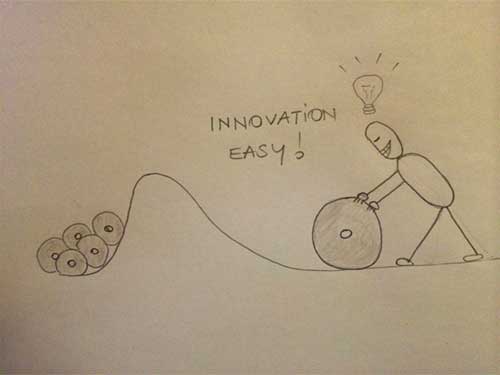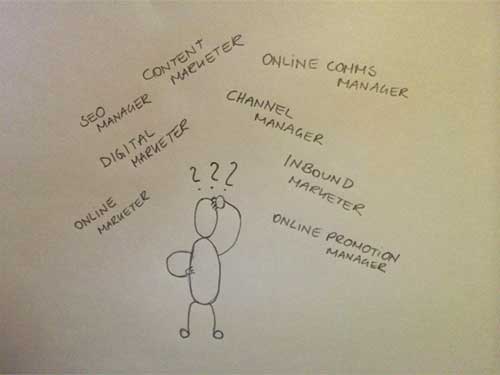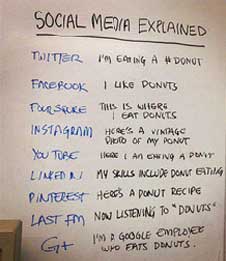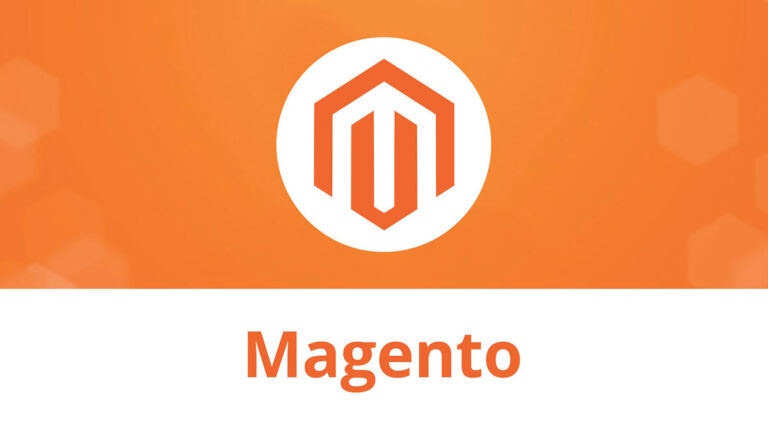So, the face of digital marketing has been changing rapidly over the last few years. It seems every time I read one of the Digital Marketing blogs out there I wonder if I should be changing my job title. New buzzwords are popping up everywhere disguising the fact that people are still doing the same stuff hidden behind a new term nobody properly understands.
This month I want to look at some of those buzz words and see if we can get to the bottom of their actual meaning and purpose. Plus, find out if they are the digital innovation they claim to be or just a re-invention of an old story (one could say re-inventing the wheel wink)…

“Everyone believes in innovation until they see it. Then they think, ‘Oh no; that’ll never work. It’s too different’” (Nolan Bushnell, Entrepreneur and founder of Atari)
What Happened to Digital Marketing?
Before we delve into all these new terms, words and titles, let’s ask ourselves ‘What happened to Digital Marketing?’
With the increase of Google Updates, penalties and general Google grumpiness we have slowly seen a decline in some of the known terms of Digital Marketing. To some degree, when at a client meeting, you got to think twice about what you say or who you are.

Most Penguin, Panda and Hummingbird have changed the Digital Marketing field dramatically. Poor quality content placed across the web, pushed through link farms and creating an influx of links manipulating keyword rankings – has become something of the past (we would hope).
Everyone is talking content and content marketing. But what is content marketing? The name does give a little hint – it must have something to do with content! Brilliant! To make things easy and straight forward here what Wikipedia says it is:
“Content marketing is any marketing format that involves the creation and sharing of media and publishing content in order to acquire customers. This information can be presented in a variety of formats, including news, video, white papers, ebooks, infographics, case studies, how-to guides, question and answer articles, photos, etc” (Wikipedia)
Interesting sounds a lot like what I have been doing over years in on my campaigns. What I do like is that the definition says “to acquire customers” and not what a lot of people still use these tactics for “to increase ranks” and manipulate Google search results.
Content marketing should only really be used in connection with a detailed Audience Analysis. How will you be able to cater for potential customer needs if you do not know who these customers are and where to find them? If you simply place content across the web without keeping your audience in mind then how are you acquiring customers?
Benjamin Franklin really hit the nail on the head quite a while before Google: “Either write something worth reading or do something worth writing…”
So although a big buzz word – nothing really new – something we here at ThoughtShift (we are a Digital Marketing Agency in Brighton) have always aimed to do – create engaging, relevant, high quality content that will attract key audiences and drive good quality visits (and conversion) for our clients! Our case studies tell the story!
What is Inbound Marketing?
Some of my connections within the industry have changed from Digital Marketers to “Inbound Marketers” or “Inbound Marketing Managers”. This has for a while really intrigued me. When talking to them about this new and interesting sounding job role, it all seemed pretty much the same story with a different headline.
Once I give you the definition of inbound marketing you will be scratching your head:
Inbound marketing is promoting a company through blogs, podcasts, video, eBooks, Enewsletters, whitepapers, my contributions to the blog to find out more about Digital Marketing, or sign up to the ThoughtShift Guest List, our monthly email, to keep up-to-date on all our blogposts, guides and events.






